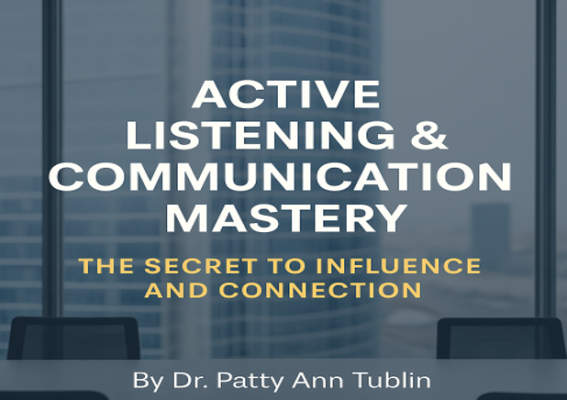
Every leader knows the importance of communication. But here’s the truth: most leaders think they’re better communicators than they actually are. Why? Because they confuse talking with communicating — and they underestimate the power of actively listening.
Active listening is one of the most underrated leadership skills, yet it’s also one of the most powerful. When paired with communication mastery, it transforms how you lead, influence, and connect.
What Active Listening Really Means
Active listening isn’t just sitting quietly while someone else speaks. It’s about being fully present, tuning into both what is said and what is left unsaid. It means resisting the urge to interrupt, rehearse your response, or rush to solve the problem.
A leader who actively listens communicates:
- Respect – “What you say matters.”
- Validation – “I hear you and understand you.”
- Trust – “You can speak openly with me.”
And trust is the currency of leadership.
Why It Matters in Business
Think of the last time you felt truly listened to. Chances are, you walked away feeling valued and respected. Imagine if your team and clients felt that way after every conversation with you.
Active listening and strong communication lead to:
- Stronger relationships with employees, clients, and stakeholders.
- Fewer misunderstandings and costly mistakes.
- Faster problem-solving because people share more openly.
- Greater influence — people follow leaders who listen.
Communication Mastery: More Than Just Words
Mastering communication means learning to match clarity with empathy. It’s about how you say things, not just what you say. Effective leaders adapt their communication style to fit the audience, the moment, and the message.
Elements of communication mastery include:
- Clarity – Keep it simple and direct.
- Tone – Match your energy to the situation.
- Body language – Your posture, eye contact, and facial expressions speak louder than words.
- Feedback loops – Confirm understanding by asking questions and inviting input.
How to Strengthen Active Listening & Communication
Here are three practices you can start today:
- Pause Before Responding
Resist the urge to jump in. A short pause signals that you are considering what was said.
- Reflect Back What You Heard
Try: “What I’m hearing is…”or “It sounds like you’re saying…” This simple step prevents miscommunication and makes the other person feel heard.
- Listen Beyond Words
Pay attention to tone, pace, and body language. Often, the real message hides beneath the surface.
Final Thoughts
Great leaders don’t dominate conversations — they elevate them. They listen deeply, respond thoughtfully, and adapt their communication to build connection.
When you combine active listening with communication mastery, you unlock the ability to influence with authenticity, inspire with clarity, and lead with trust.
Dr.Patty Ann
